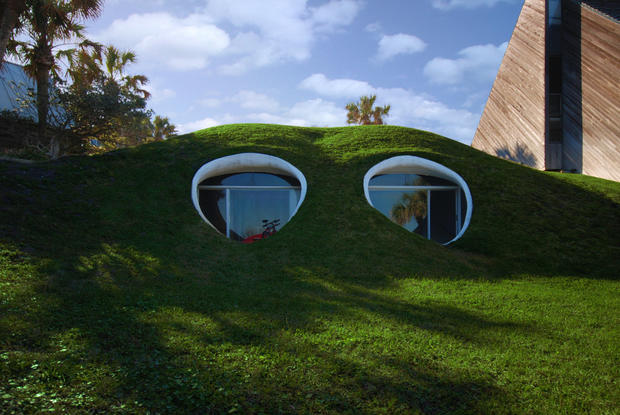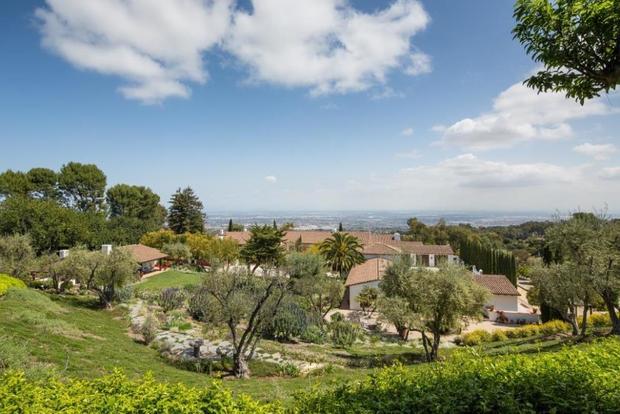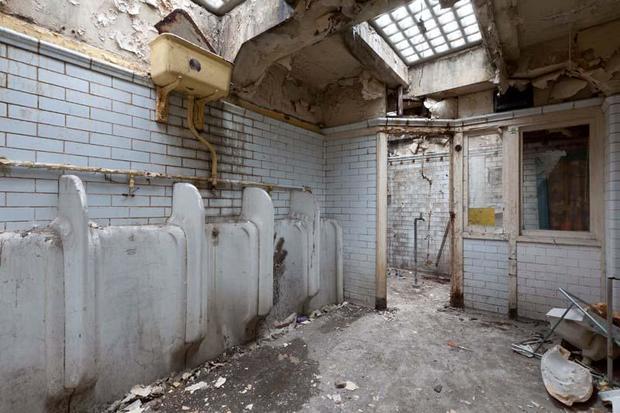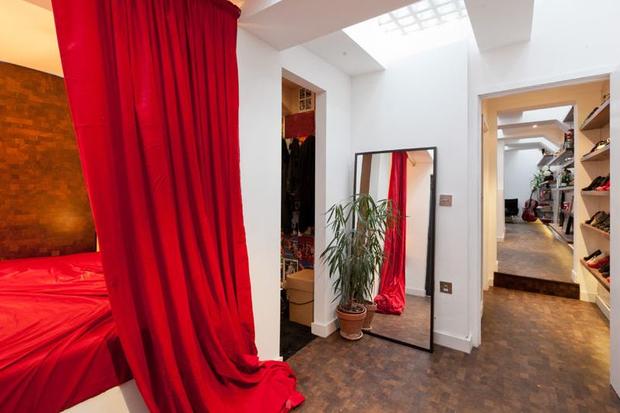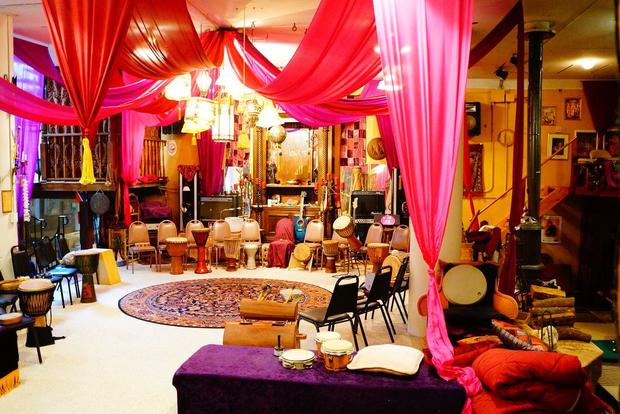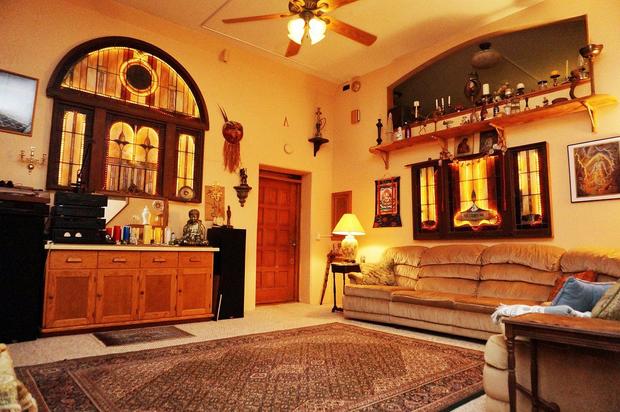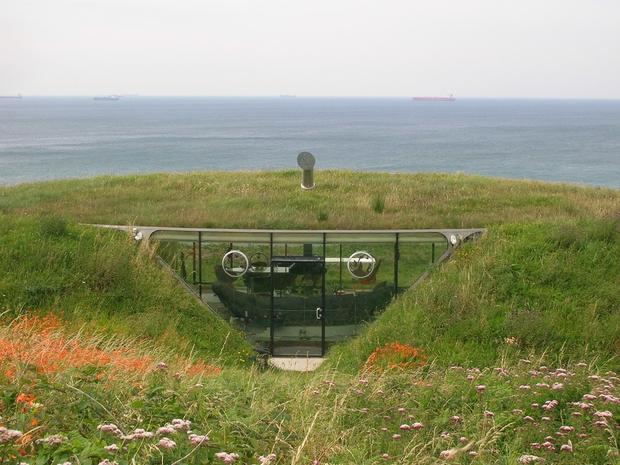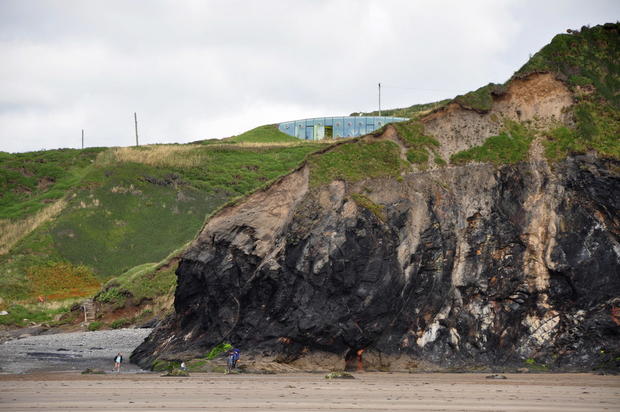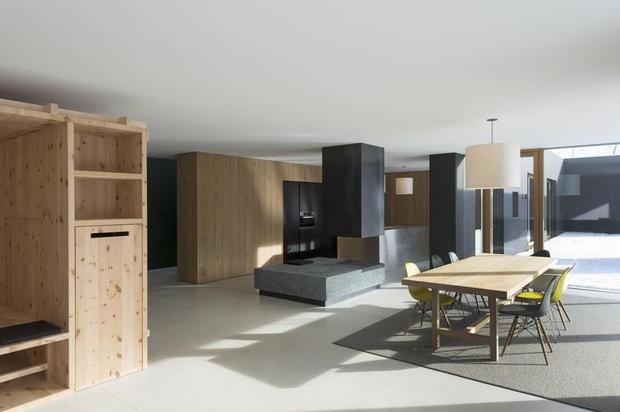6 unbelievable underground homes
You don't have to be a Hobbit or a super villain to live underground.
In fact, the U.S. Department of Energy says earth-sheltered houses require less outside maintenance, are sometimes less expensive to insure and can have lower energy costs in environments with extreme temperatures.
Some architects like the challenges underground spaces pose and see them as great opportunities for innovative design. Other homeowners, like millionaire John Z. Blazevich, like the idea of building below the surface because there is a lot more space. There are even people who enjoy recycling abandoned spaces, like public restrooms and missile bases, and turning them into livable dwellings.
Take a look at these six unique subterranean properties that may inspire you to start digging.
Photo credit: Prudential Real Estate
Hacienda de la Paz
Above land, the Hacienda de la Paz looks like a typical Rolling Hills, California, mansion. But hidden underground, there are five additional levels of lavish living space.
Photo credit: Mark Singer Photography
Hacienda de la Paz
John Z. Blazevich originally built and owned the estate, having earned his millions as CEO of shrimp importer Viva Food Group. He wanted a lot of features in the home, and thanks to his unique, hilly lot and local laws banning tall structures, Blazevich was able to go underground to get the 50,000 square feet he wanted. He worked with famed Spanish curator Rafael Manzano Martos on the luxury design, which features an indoor tennis court, 10,000-square-foot Turkish bath, ballroom, nine bedrooms, 25 bathrooms, secret passages and pine flooring made from trees that fell 300 years earlier.
This unique property has been on the market since last year, and could be yours for a whopping $53 million.
Photo credit: Mark Singer Photography
Former Crystal Palace public restroom
Architect Laura Clark is known, affectionately, as "Toilet Girl."
It all started when she moved to London in 2005 and noticed an abandoned, 600-square-foot space underground that used to house two public restrooms near the Crystal Palace railway station. More than six years, lots of council meetings and a lot of hard renovation work later, Clark and her husband moved in.
Photo credit: Laura Clark
Former Crystal Palace public restroom
The cozy one-bedroom home cost about $90,000 to renovate, plus $32,000 for the property. Clark, who is a semi-professional mixed martial artist, did most of the labor herself. Smell was a bit of a problem at first, so she and her crew jet-washed the space after demolition and poured concrete over the original sewage points, eliminating that issue.
Its sleek and modern design has a surprising amount of natural light coming from ceiling windows and a small terrace outside the bedroom.
Photo credit: Laura Clark
Subterra
When Edward and Dianna Peden bought this former Atlas E missile base 25 miles west of Topeka, Kansas, it was flooded with more than 1 million gallons of water. Before that, it protected an intercontinental ballistic missile with a warhead. It was a major fixer-upper.
Now the couple is dedicated to cultivating an "eclectic spirit of peace" where the large weapon was once stored.
Photo credit: Edward Peden
Subterra
"What used to be the missile control room is now our living room," Edward said.
The 6,500-square-foot, four-bedroom Subterra property has a great room with hand drums and a stage, a hot tub and sauna, two observation towers and a ceremonial stone circle.
The Pedens didn't stop with a single, personal project. Their company, 20th Century Castles, has located, acquired and negotiated the sale of 57 former missile sites and communication bunkers since 1995. At MissileBases.com and SubterraCastle.com, they show off photos of their extreme home renovation to prove what is possible.
Photo credit: Edward Peden
Dune House
Dune House in Atlantic Beach, Florida, is a modernist landmark. Architect William Morgan, who designed the home to be used as a vacation rental, started at Harvard as a student of Bauhaus-founder Walter Gropius in the 1950s. He is known for several notable buildings, including the Florida State Museum of Natural History and the Florida Hilltop House, which is also underground.
Dune House has received attention from architecture enthusiasts ever since it was built in 1975, including Miami financial executive William Drew, who bought the home from Morgan for $900,000 in 2012.
Photo credit: Prudential Real Estate
Dune House
The earth-covered duplex was constructed using the same methods used to design and build swimming pools. Morgan created a concrete shell that could be supported by a native sand dune. The mirrored shape of the home looks a lot like a seashell you might pick up on the beach.
Each of the two individual apartments are 750-square-feet and have a sunken living area, sleeping loft and curved staircase.
Photo credit: Prudential Real Estate
Malator
People local to Druidston Haven, in Pembrokeshire, Wales, call this underground dwelling the Teletubby House. When you look at its bright colors and playful design, it's easy to see why.
Photo credit: Simon Mortimer
Malator
The home's actual name is Malator. It was designed by the defunct architectural firm Future Systems -- now known as Amanda Levete Architects -- and built in 1998. The avant-garde company originally wanted to construct the house on top of the land in Pembrokeshire Coast National Park. When they were refused, they went into the ground instead.
Malator's see-through façade reveals its single living area, which features a circular fireplace in the center. It also provides a panoramic view of St. Bride's Bay.
Photo credit: David Price
Villa P
Villa P was built to complement naturally-occurring stone walls and sloping fields north of Bressanone, Italy. The design, created by Italian architecture company Bergmeister Wolf Architekten, is a vineyard farmstead where planting stops just feet from the chimney.
Photo credit: Lukas Schaller
Villa P
The home's staggered structure is made of stone and concrete, with a wooden fence lining a long terrace. Inside, modern furniture made from natural materials gives the space an organic but polished feel.
The bathroom, which is completely covered in bright yellow tiles, is probably Villa P's boldest detail. It has contrasting black fixtures, wood paneling and lots of natural light.
Photo credit: Lukas Schaller
